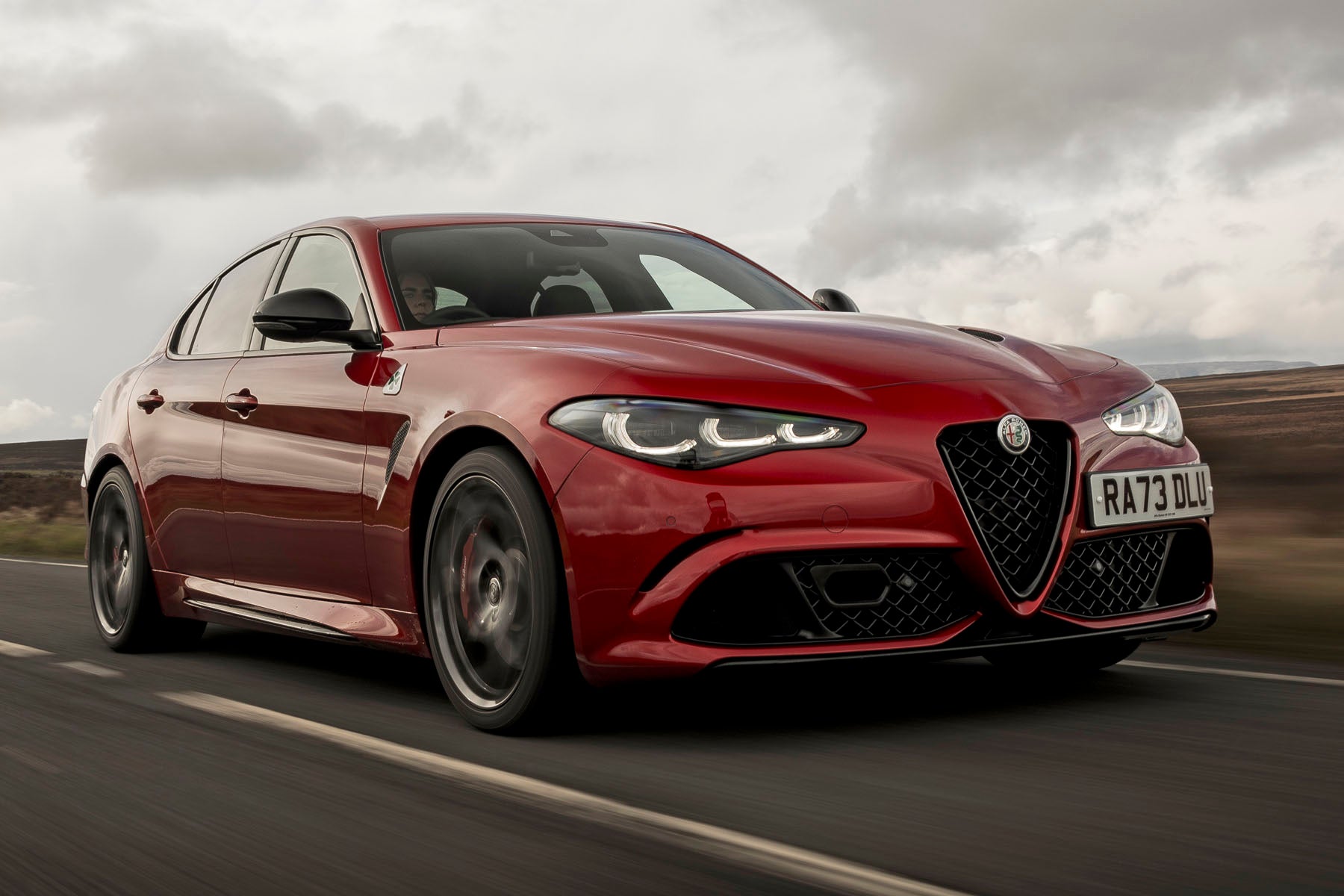Alfa Romeo Giulia Review 2024
Written by Andrew Brady
Quick overview
Pros
- Major handling fun
- Looks a million dollars
- Improved cabin quality
Cons
- Limited choice of engine and trim options
- Cramped rear seats
- Petrol engines’ CO2 emissions
Overall verdict on the Alfa Romeo Giulia
"In this 2024 Alfa Romeo Giulia review, we're looking at the Italian manufacturer's premium saloon that goes up against the German saloons that seemingly everyone wants to buy. But it rewards those who decide to think a little differently, with an attractive design and a great driving experience."
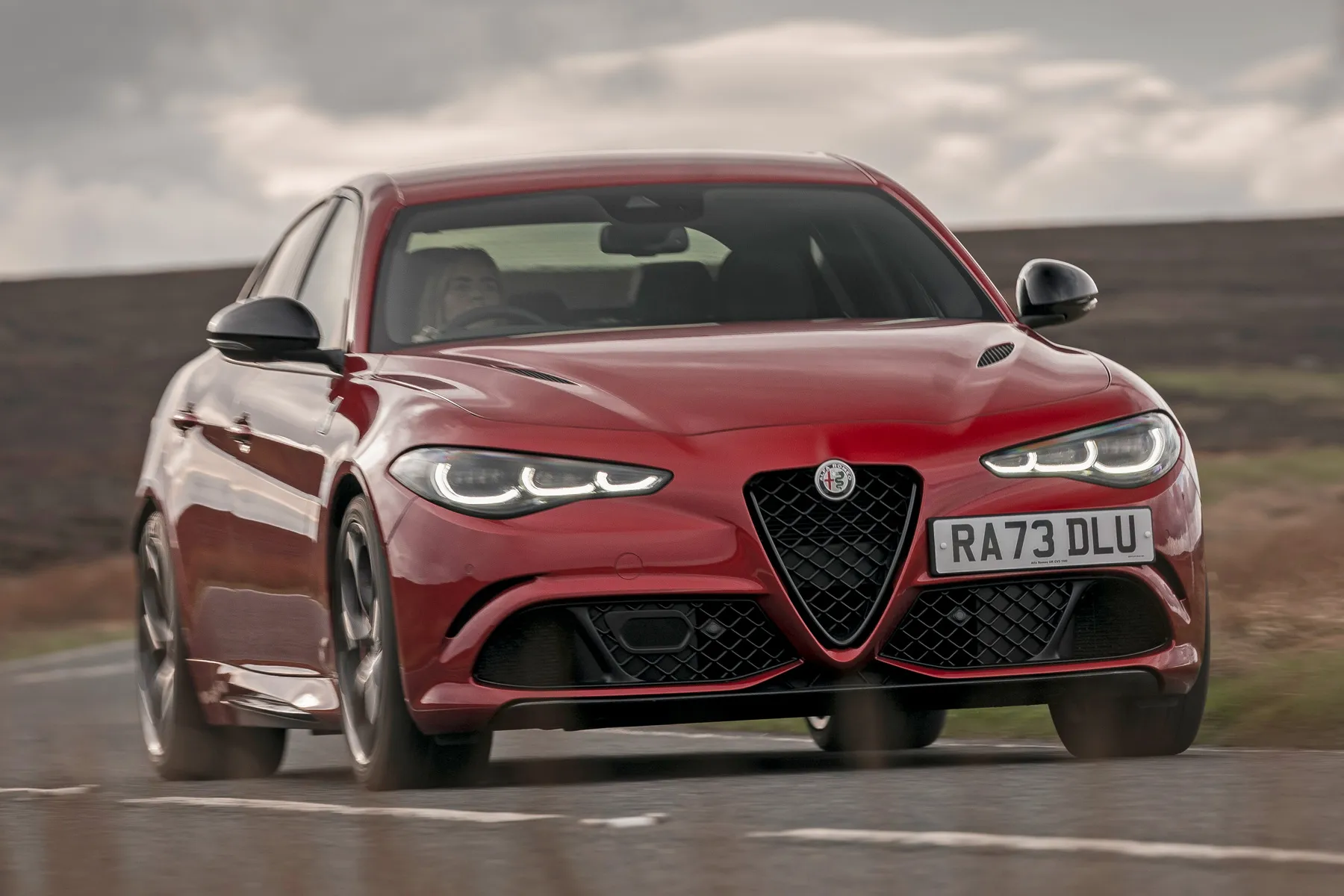
Is the Alfa Romeo Giulia one of the premium car market's best-kept secrets? It looks fabulous, is great fun to drive and can still do the boring stuff pretty well, too. It deserves more recognition than it gets, and should be pinching more sales from its German rivals.
Sure, there's a relatively limited engine range and it's lagging a little bit on quality against the best in class, but if you can live with those minor niggles there's a lot to like about it. Up until quite recently, the diesel continued to make up most of the sales, with the majority of Alfa Romeo Giulias being aimed at fleets and family buyers.
Helping the Alfa Romeo Giulia to appeal to those who want something with a sporting feel, the rear-wheel drive saloon is very much geared towards driving pleasure, with extremely well-sorted suspension, responsive steering and torque-packed engines. The four-cylinder turbo petrol and diesel motors are responsive and punchy, or if you want to get a proper move on there’s the 2.9-litre twin-turbo V6 Alfa Romeo Giulia Quadrifoglio with a mighty 510PS, upped to 520PS in 2024.
Claimed economy is strong with the four-cylinder motors, which is good news for company car drivers. Officially, the diesel Giulia will return more than 52.3mpg, which is on par with most rivals. All 2.2 diesels get an eight-speed torque converter automatic gearbox as standard, which delivers power to the rear-wheels with smooth precision, making it easy to take advantage of the Giulia's grippy and balanced chassis.
The petrol-powered models also use an eight-speed auto as standard and the only downside to this is the optional large steering-wheel mounted paddle shifters feel a little too far away from your fingers for easy operation.
The fit and finish of the cabin isn't as good as German rivals, admittedly, but it's an improvement over previous Alfa Romeos, and made yet more strides in the right direction with the Alfa Romeo Giulia facelift at the tail-end of 2019.
The infotainment isn't anywhere near as advanced as the systems found in a BMW, Audi or Mercedes-Benz. However, this was another area that was improved with the 2019 update and the Giulia now comes with an 8.8-inch touchscreen display in the centre of the dash that lets you drag and drop icons to customise the screen to your preferences. Later cars also come with a 12.3-inch digital instrument screen.
Space is reasonable, with enough room for four adults at a push. The boot's also good enough, with 480 litres of space on hand, although a shallow opening can make fitting bulky items in tricky. It’s also worth noting there is not an estate version of the Alfa Romeo Giulia to broaden its appeal next to the German competition.
That's not to say you should dismiss the Alfa Romeo Giulia. It has some very likeable traits that make it a genuine alternative to the mainstay of many otherwise bland looking upmarket saloons. Its superb handling is the main reason you will buy a Giulia, but its other traits are sufficient to make it a rewarding longer term proposition.
Looking for a used car for sale? We've got 100s of Alfa Romeo Approved Used Cars for Sale for you to choose from, including a wide range of Alfa Romeo Giulia models for sale.
Is the Alfa Romeo Giulia right for you?
The Alfa Romeo Giulia clearly has the BMW 3 Series in its sights as the main target for buyers. This is because the rear-wheel drive Giulia’s key talent is its handling prowess. We’ve seen this before from Alfa, with the 156 notably, and it’s a ploy that has worked.
However, the downside is that the small executive saloon market has moved on since the days of the 156 and these cars have to be very able all-rounders to garner sales success and keep buyers out of SUVs.
Even so, the Alfa Romeo Giulia wins plaudits for its looks and the four-cylinder turbo petrol and diesel engines are good to use and decently frugal next to the competition. They also come equipped with a slick eight-speed automatic gearbox as standard on all models.
Inside, the Giulia is comfortable, if not the most spacious car in the class. It also had the build quality improved with a facelift in late 2019. This applies to the rampantly fast Quadrifoglio and GTA models, too, which are very creditable alternatives to the likes of the Audi RS4 and BMW M3.
What other cars are similar to the Alfa Romeo Giulia?
The BMW 3 Series is the most obvious rival to the Alfa Romeo Giulia because both have a sporting sensibility designed to appeal to keen drivers. In the case of the BMW, it does this while offering a much broader range of engines and trims to customers, making it a more appealing choice for many.
The Audi A4 and Mercedes C-Class are the other big hitters from Germany and each is a delightful car in its own way. We should also mention the Jaguar XE as a British alternative to the Alfa, and another with a focus on sporting fun. The Lexus IS has similar ingredients to the Alfa but doesn’t make the grade, while the Volvo S60 has a distinctly Scandi flavour that we find alluring.
Comfort and design: Alfa Romeo Giulia interior
"While the Alfa Romeo Giulia's cabin does feel a bit more special than older Alfas, it's still nowhere near the standards set by Mercedes-Benz and Audi. Various elements of the interior feel cheap and a bit flimsy to the touch, although quality improved quite a bit from 2019 onwards."
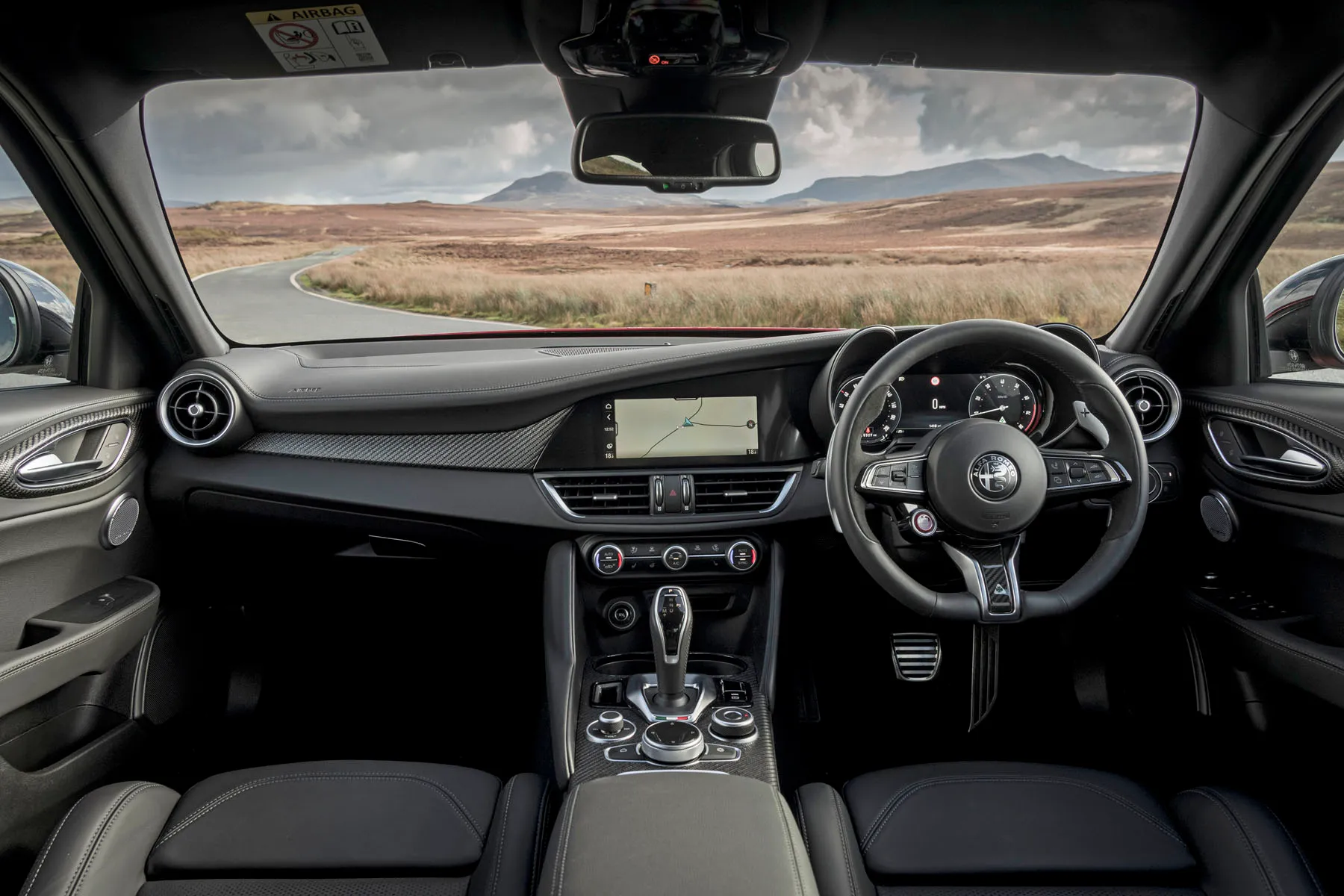
It's different, at least. The swooping dashboard looks rather swish and there’s now a 12.3-inch TFT screen behind the steering wheel to project important info to the driver. There’s also an 8.8-inch touchscreen infotainment display in the middle of the dashboard.
Adjusting the driving position is easy enough, although some may find the Alfa Romeo Giulia still places them lower in the car than they might want - great for a sporty feel, not so great for smaller drivers wanting better visibility. However, there are various cubby holes for storage that are big and easy to access, although the glovebox is unusually small.
Optional twin sunroofs do a good job of brightening up the interior, with the front one being electrically operated should you want to let in more air. You can also brighten up the Alfa Romeo Giulia’s interior with a range of options and extras to make it as sporting or luxurious as you want it to be.
Quality and finish
This was an area where the Alfa Romeo Giulia fell seriously behind its rivals until a facelift and update in late 2019. Even then, it was more a case of getting up to par for the class rather than striding ahead of the competition.
One of the main areas to be improved was the upgrade to an 8.8-inch touchscreen for the infotainment that is easier to use and personalise, although the screen still looks very small and basic by the standards of the class. More importantly, almost anywhere your hands or fingers come into contact with the Alfa Romeo Giulia now feel more substantial and sorted. This is exemplified by the leather-bound lever for the eight-speed automatic gearbox.
The steering wheel has also been improved to feature the buttons and functions needed to work in harmony with the car’s improved autonomous driving systems. It all combines to make the Giulia feel more worthy of its asking prices and sit more easily next to the vault-like build quality of the Audi A4 and Mercedes C-Class. Even so, reach down around the base of the driver’s seat and you will still find some sharp edges to the plastics that are just not present in the Alfa’s German opposition.
Infotainment: Touchscreen, USB, nav and stereo in the Alfa Romeo Giulia
Alfa Romeo has made a huge improvement to the Giulia’s infotainment thanks to an upgrade at the end of 2019. Before that, you were saddled with a screen that was not as intuitive as those of its rivals and did not have touchscreen functionality. Now, the Alfa Romeo Giulia has an 8.8-inch touchscreen that can be paired quickly with your smartphone through Android Auto or Apple CarPlay to access music and apps. The touchscreen also lets you slide and drop icons on the display to personalise it to your tastes, which is handy when you want to prioritise certain functions to get at them quickly. Having said all that, though, the screen still looks very small and basic next to those in the established German rivals.
Early Giulias had regular instrument dials, but in 2019, Alfa fitted a 7.0-inch TFT screen in the centre of the main instrument binnacle. It provided a variety of displays for information such as sat-nav instruction, journey information and speed. This has since been replaced by a 12.3-inch TFT digital instrument screen.
The Alfa Romeo Giulia also comes with Alfa’s Connected Services, so you have on-board connectivity. It can help with sat-nav instructions and safety with the My Assistant function that can send out an SOS call in the event of a collision with your exact location.
Space and practicality: Alfa Romeo Giulia boot space
The dimensions of the Alfa Romeo Giulia haven't changed since it was first introduced, at 4.6m long and 1.8m wide, which is pretty much on a par with key rivals. Cars like the Giulia in the small executive sector are often excused for not offering as much rear space to passengers as family cars. That seems unfair to us and the Alfa Romeo Giulia is an example of how you can pair upmarket appeal with mainstream space.
Getting into the back of the Giulia is a little trickier than in the likes of a Ford Mondeo or Vauxhall Insignia as the Alfa has a low-slung roof line. However, once inside, the Alfa Romeo Giulia provides enough space for two six-foot adults to sit in more than adequate comfort due to the amount of head-, leg- and shoulder space on offer.
You can forget about carrying a third adult in the Giulia, though, because the central rear perch is narrow and has a noticeably raised cushion. It does, however, come with a three-point seat belt to securely keep kids in place. There are also two ISOFIX child seat mounts fitted in the rear bench on the outer pews.
Head round to the boot and the opening is quite small. What's more, the lower edges of the opening curve upwards at the sides to further limit what you are able to fit into the compartment. The Alfa Romeo Giulia's 480-litre boot is a decent size, though some of this space is wasted due to interruptions from the side walls and the shape of the load bay.
In early Giulias of a modest trim level, you had to pay extra to get the 40-20-40 split and tip rear seat that was standard in higher grade Alfa Romeo Giulia models, so this won't be fitted to some used examples. It was later made standard across the range. With the rear seat folded, you can fit in longer loads, but the rear bulkhead gets in the way of anything too large, so it’s better viewed as somewhere to stick your golf clubs or skis.
One other point to bear in mind with the Giulia is Alfa Romeo does not offer an estate version, so the saloon is all you’ve to choose from. In terms of boot practicality, it’s not as good as its German rivals for versatility but outright space is in the right ball park.
Handling and ride quality: What is the Alfa Romeo Giulia like to drive?
"Probably the main reason why you'd consider an Alfa Romeo Giulia over the obvious German rivals is the way it drives. It fits the template of Alfa Romeos of old, in that you can genuinely call it a sports saloon, even if you choose one of the more low spec trims or lower power engines."
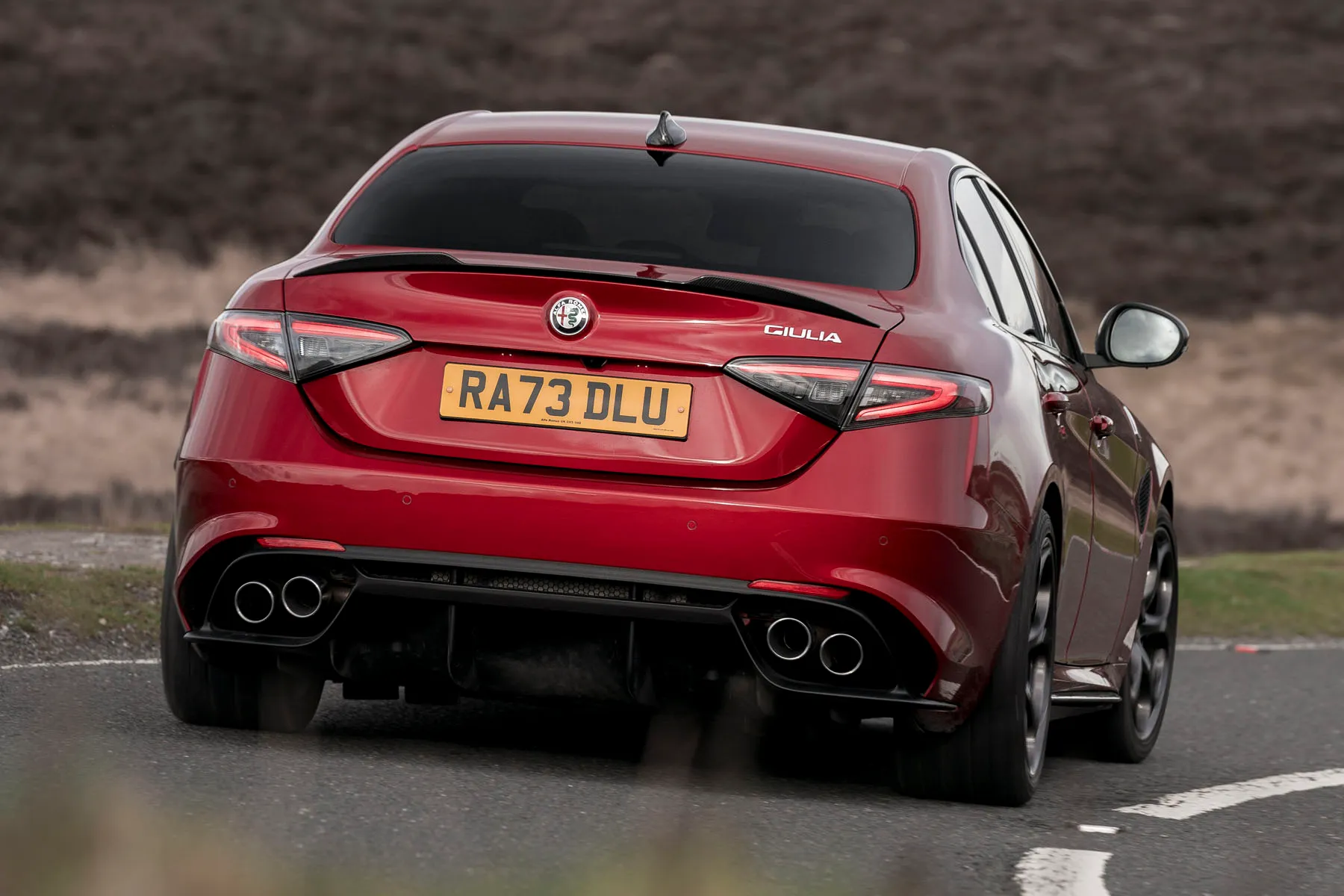
The handling is sharp but friendly, engaging and satisfying. The steering is very quick to respond to the driver's inputs and accurate with it, so you can put the car exactly where you want it to be on the road. There's also a good amount of feedback through the steering wheel, and with the rear-wheel-drive layout you can balance the car through corners easily.
This pleasingly sporting approach doesn't mean you have to put up with a poor ride, though. Admittedly versions with bigger wheels aren't quite so comfortable, but the Alfa Romeo Giulia is no bone-shaker, and deals with rougher road surfaces with little trouble. Ultimately the Audi A4 and Mercedes-Benz C-Class are more comfortable in the right spec, but the Giulia is close behind and more fun to drive than either.
The fun-to-drive nature is taken to the extreme in the Alfa Romeo Giulia Quadrifoglio, which is one of the most exciting and engaging sports saloons money can buy. It was improved further during a 2024 update, when a mechanical limited-slip differential was added in place of electronic toque vectoring, making the handling sharper, more progressive and more predictable.
What engines and gearboxes are available in the Alfa Romeo Giulia?
The Alfa Romeo Giulia Quadrifoglio has a 2.9-litre twin-turbo V6 petrol motor putting out 510PS, or 520PS following the 2024 update. It’s a jewel of an engine and defines this car’s brutally fast character. If you can afford the steep asking price, insurance and fuel bills, you are in for a treat on every trip.
For almost everyone else, the choice is between a 2.0-litre turbo petrol and 2.2-litre turbodiesel. If you can’t stretch to the Quadrifoglio, the 280PS 2.0-litre petrol in the Alfa Romeo Giulia Veloce Ti is a very good second choice thanks to its rev-happy nature and a 0-62mph time of 5.7 seconds.
More likely is you’ll look to the 200PS version of the petrol engine, which is still no slouch as it can cover off 0-62mph in 6.6 seconds and feels every bit as eager working its way through the eight-speed automatic gearbox used in every Alfa Romeo Giulia.
However, it’s the diesels that make the most sense for used car buyers for their economy and lower emissions. The 2.2-litre unit comes in 160PS and 190PS forms, with the more powerful unit taking care of 0-62mph in 7.2 seconds and the 160PS car following one second later. On the road, you won’t notice the performance gap that much. Both have lots of low-rev shove so you can be as lazy as you like or make full use of the power for more spirited driving. Better still, on the motorway, these diesels are in their element with plenty of oomph in reserve if it’s needed.
As is the trend these days, the diesels are no longer available, and the only engines left available to buy brand new are the 280PS petrol and the Quadrifoglio.
Refinement and noise levels
For a car with an obviously sporting intent to its looks and drive, the Alfa Romeo Giulia makes a virtue of refinement in all but the Quadrifoglio model. Pick this fastest of all Giulias and its rorty, snorty V6 is only ever a dab on the accelerator pedal away from making itself known. It’s a soul-stirring noise, but can become wearing on long trips, especially with the amount of road noise kicked up by its fat tyres.
In the rest of the Alfa Romeo Giulia range, engine noise is impressively well suppressed regardless of which engine you choose. The diesels make a little rumble when started from cold and there’s a little roar when any of the engine’s are worked hard, but they all settle to a quiet background hum at a cruise. This is more prevalent in the diesels than the petrols, but no worse than most of the Alfa’s rivals.
Road noise is also ably quelled, but some wind noise enters the cabin at motorway pace. We should also note the eight-speed automatic gearbox can occasionally hesitate when shifting gears, which upsets the car’s normally calm equilibrium.
Safety equipment: How safe is the Alfa Romeo Giulia?
Alfa Romeo is to be applauded for its 98 per cent score for adult occupancy safety for the Giulia in Euro NCAP tests. It also rated a very high 81 per cent for child safety onboard and earned an overall five-star award. It should be noted, however, that this rating was earned in 2016 when the testing standards were much easier than they are today. Since Euro NCAP only recognises its own ratings for five years due to ever-improving testing standards, the Giulia's rating has now expired.
Every Alfa Romeo Giulia comes with twin front-, side- and curtain airbags as standard, as well as three-point belts for all five occupants. There are two Isofix child seat mounts in the back seats and a front passenger airbag deactivation switch to allow a rear-facing child seat to be used.
All Alfa Romeo Giulias come with an ESP traction and stability system that cannot be fully disengaged to help protect its driver and occupants. There’s also autonomous emergency braking to detect approaching hazards and apply the brakes if the driver fails to notice the impending danger. Alfa also fits a lane keeping assistance function to warn the driver if the car is wandering off line.
MPG and fuel costs: What does an Alfa Romeo Giulia cost to run?
"There is quite a marked gap between the fuel economy of the petrol and diesel models in the Alfa Romeo Giulia range. The best the petrol motor can muster is an official WLTP combined consumption of 36.2mpg for the 200PS unit. The 280PS version of the 2.0-litre turbo petrol registers 33.6. Real MPG figures suggest the 200PS can get close to its claimed figure but the 280PS unit is closer to 30mpg. And the Quadrifoglio? Don't even ask..."
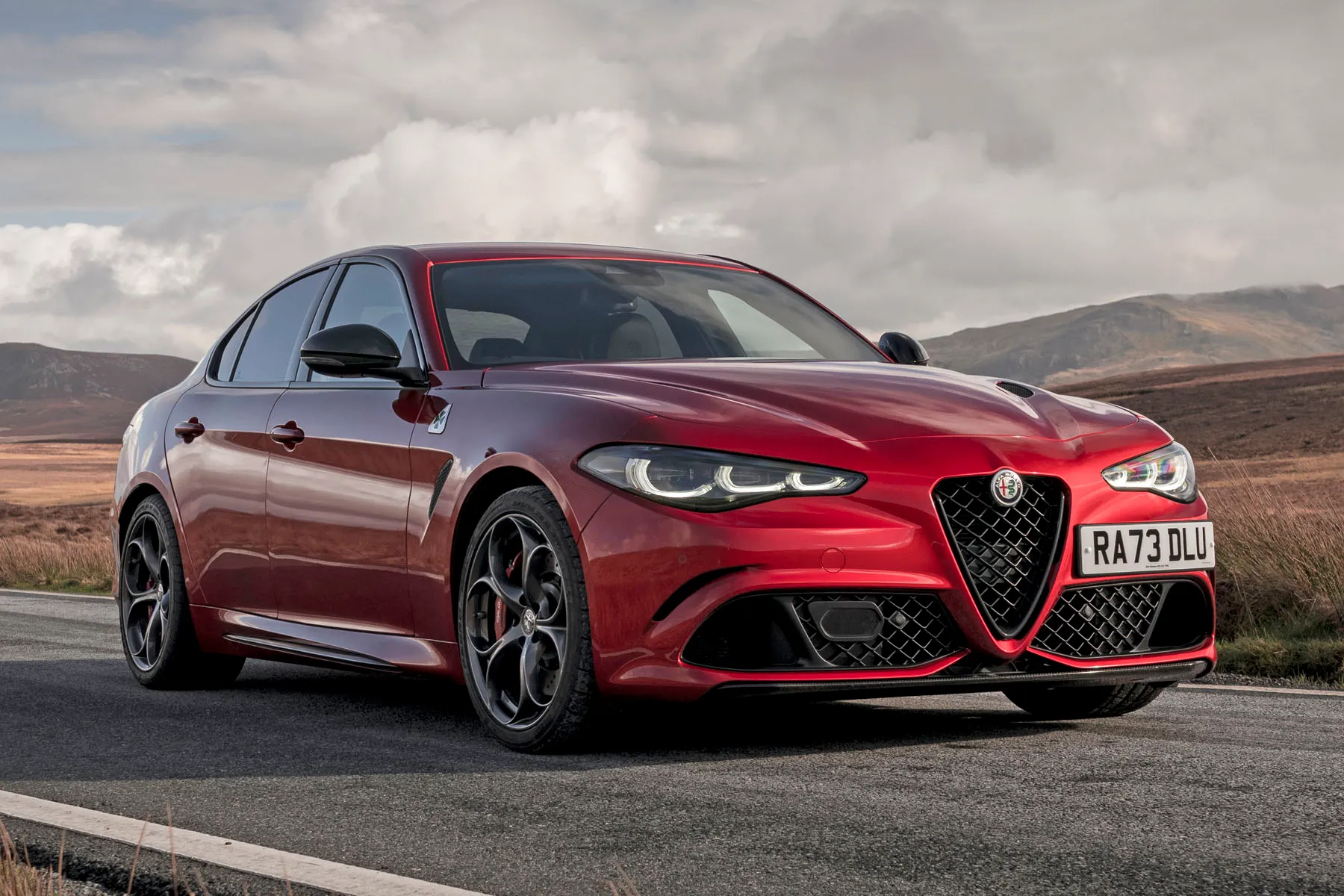
For the diesels, the 160PS engine has an official WLTP claimed best of 53.3mpg and the 190PS is 1mpg behind. There are no Real MPG figures for these two engines but experience suggests they return close to 50mpg in normal driving conditions.
As we said earlier, new-car buyers now only have the choice of the two most powerful petrol engines.
How reliable is the Alfa Romeo Giulia?
This is not an area where Alfa Romeo has historically been strong. In the last HonestJohn.co.uk Satisfaction Index in which it was included, the Italian brand came 23rd out of 30, with an overall satisfaction score of 86.1% - mind you, that was just a few tenths of a percentage point behind Audi and BMW.
The Giulia itself was one of the better performing Alfa Romeos, scoring 9.50 out of 10 for reliability.
Insurance groups and costs
The various versions of the Giulia have been known by many different names over the years, and the one-time entry-point to the range, the Alfa Romeo Giulia Super, comes with the lowest insurance rating of all in group 22, which is lower than many key rivals. This is the for the 2.2-litre turbodiesel model, but if you want this trim and a petrol engine in your used Giulia, you will pay insurance premiums based on a group 24 rating.
The roles are reversed for the higher powered versions of these two engine types, with the 280PS turbo petrol Veloce model sitting in group 25. Take the 190PS diesel Alfa Romeo Giulia Speciale and it falls into group 29. As for the Veloce Ti petrol, it’s in group 36, while the Quadrifoglio resides all the way up in the heady heights of groups 46-49.
VED car tax: What is the annual road tax on an Alfa Romeo Giulia?
VED is a bit of a minefield where the Giulia is concerned. All examples registered since April 2017 will be subject the the same flat rate of annual VED tax as every other petrol and diesel car, that flat rate sitting at £!80 per year. However, cars that cost more than £40,000 when brand new - including any optional extras fitted - are liable for an additional luxury car surcharge of £390 to be paid for a five-year period between years two and six of the car's life, taking your annual outlay for that period up to £570. The pricing of the Giulia means that this surcharge will effect some examples and not others, so it's worth doing an online check on any used example you're considering to make sure you know what you're looking at. On the other hand, the Giulia is sufficiently old now that this this five-year period could already have expired, so it might not be a problem any more.
Cars registered before April 2017 are taxed according to their CO2 emissions. On some of the diesels, annual tax can cost as little as £20, but on an early Quadrifoglio, it can be as much as £365.
How much should you be paying for a used Alfa Romeo Giulia?
"As a new car the Alfa Romeo Giulia is priced on a par with its German rivals, but it'll be a lot cheaper to buy used as it's been around for so long."

The cheapest models will cost you around £16,000 to £17,000. This will get you a diesel or petrol version in Super trim with a full service history, or maybe a Veloce with higher mileage. If you choose to buy from a franchised Alfa dealer, it will be a little more expensive, probably around £1000 higher, but you have the peace of mind of a used warranty.
Trim levels and standard equipment
The Giulia has been on sale for such a long time that the trim levels available - and the level of equipment they come with - have changed several times, and various special editions have also come and gone over the years. Things are made even more complicated by the fact that some trim levels were only available with certain engines.
The current entry-level trim is the Alfa Romeo Giulia Sprint and it comes with 18-inch alloy wheels, Active Cruise Control, wireless phone charging, automatic headlights and wipers, and LED rear lights. You also get Alfa’s DNA driving modes, a reversing camera and front- and rear parking sensors. In the cabin, there’s climate control, cloth upholstery, leather-bound steering wheel, and the Alfa Connect 8.8-inch infotainment touchscreen with sat-nav, DAB, eight speakers, Apple CarPlay and Android Auto.
Next is the Alfa Romeo Giulia Veloce that adds 19-inch wheels, sport-style bumpers, aluminium shift paddles. This version also comes with leather upholstery, electrically adjustable and heated front seats, heated steering wheel and upgraded brakes.
Ask the heycar experts: common questions
Is the Alfa Romeo Giulia a good car?
Is the Alfa Romeo Giulia reliable?
Does the Alfa Romeo Giulia have a Ferrari engine?
Get our latest advice, news and offers
Keep me updated by email with the latest advice, news and offers from heycar.
By submitting you agree to our privacy policy
